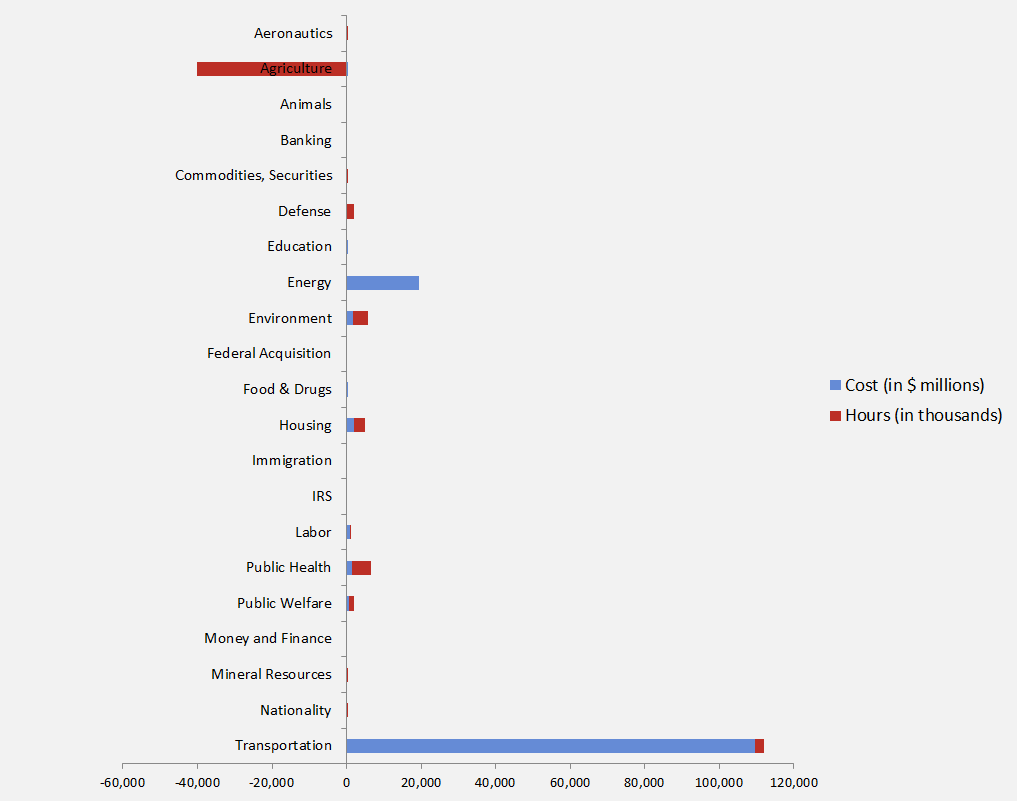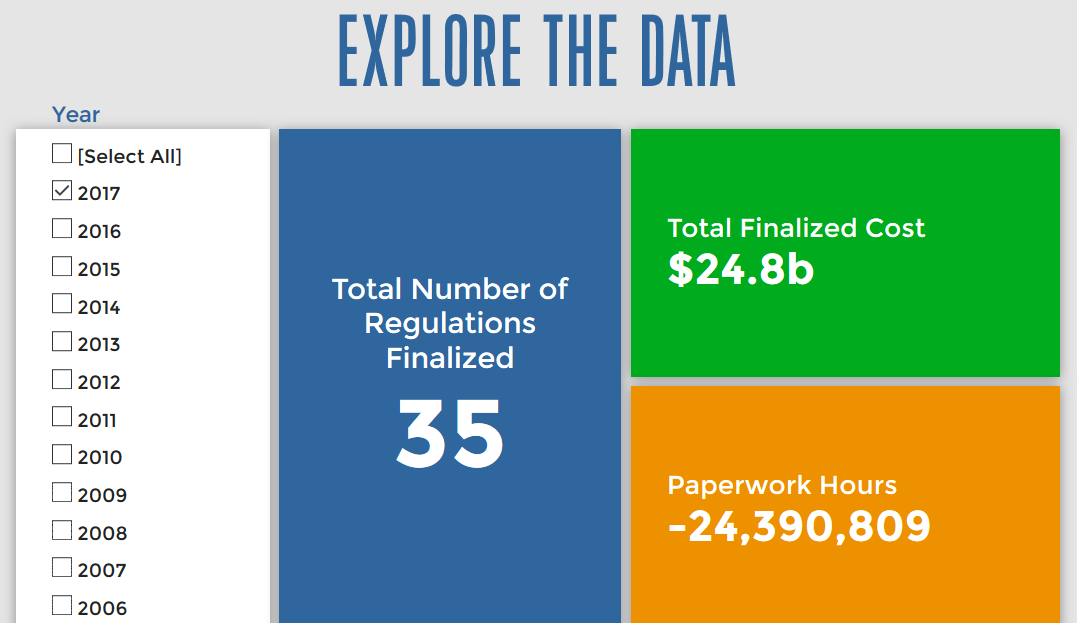Week in Regulation
January 23, 2017
Going Out with $12 Billion in Costs, 8.4 Million Hours
The final three days of the Obama Administration concluded in an incredible display of regulatory output. The administration published 12 rulemakings with total costs exceeding $100 million, including eight final rules. Three rules exceeded $1 billion in long-term costs. For the week, regulators published $12.3 billion in costs, with $2.6 billion in annual burdens compared to $4.3 billion in benefits; paperwork grew by 8.4 million hours. The per capita regulatory burden for 2017 is $419.
Regulatory Toplines
- New Proposed Rules: 53
- New Final Rules: 72
- 2017 Total Pages of Regulation: 7,630
- 2017 Final Rules: $24.76 Billion
- 2017 Proposed Rules: $111.1 Billion
The American Action Forum (AAF) has catalogued regulations according to their codification in the Code of Federal Regulations (CFR). The CFR is organized into 50 titles, with each title corresponding to an industry or part of government. This snapshot will help to determine which sectors of the economy receive the highest number of regulatory actions.
The Department of Energy (DOE) cemented its status as one of the most aggressive regulators during the Obama Administration. In eight years, it tripled the output of significant rules, compared to the combined efforts of Presidents George W. Bush and Bill Clinton. This week, it published a final rule for ceiling fan efficiency ($4.4 billion in costs) and an efficiency standard for pool pumps ($2.6 billion in costs). Through the first few weeks of 2017, DOE has already imposed $19.3 billion in burdens, or more than the listed cost of regulation for all of 2006 (unadjusted for inflation). There is just one economically significant rule under review (as of this writing), so it is unlikely DOE’s output will increase in 2017.
Every cabinet agency combined to publish a final rule on, “Federal Policy for the Protection of Human Subjects.” The original rule estimated $13.3 billion in total costs ($1.4 billion annualized) and 12.1 million paperwork burden hours. Those figures took a nosedive with the last minute final rule, as after just 12 days of executive review, the total costs are now $528 million, with 1.4 million paperwork hours.
Finally, the Department of Agriculture finalized a rule for organic livestock and poultry practices. The measure adds new provisions for handling, slaughter, and transportation of livestock. Total costs of the measure reach $370 million, with 132,000 paperwork burden hours.
Tracking Midnight Regulation
This week, OIRA received just one regulation, a prerule for bioengineered food. OIRA discharged six regulations, with one economically significant regulation. For the month, OIRA has concluded review of 62 regulations. Throughout 2016, OIRA averaged about 45 regulations per month.
The Congressional Review Act carryover provision should begin on June 13, 2017. The House and Senate should have until at least June to review rules and vote on resolutions of disapproval.
Affordable Care Act
Since passage, based on total lifetime costs of the regulations, the Affordable Care Act has imposed costs of $53 billion in final state and private-sector burdens and 176.9 million annual paperwork hours.
Dodd-Frank
Click here to view the total estimated revised costs from Dodd-Frank; since passage, the legislation has produced more than 74.8 million final paperwork burden hours and imposed $36.5 billion in direct compliance costs.
Total Burdens
Since January 1, the federal government has published $135.8 billion in compliance costs ($24.76 billion in final rules) and has cut 21.4 million paperwork burden hours (due to 24.3 million in reductions from final rules). Click below for the latest Reg Rodeo findings.












